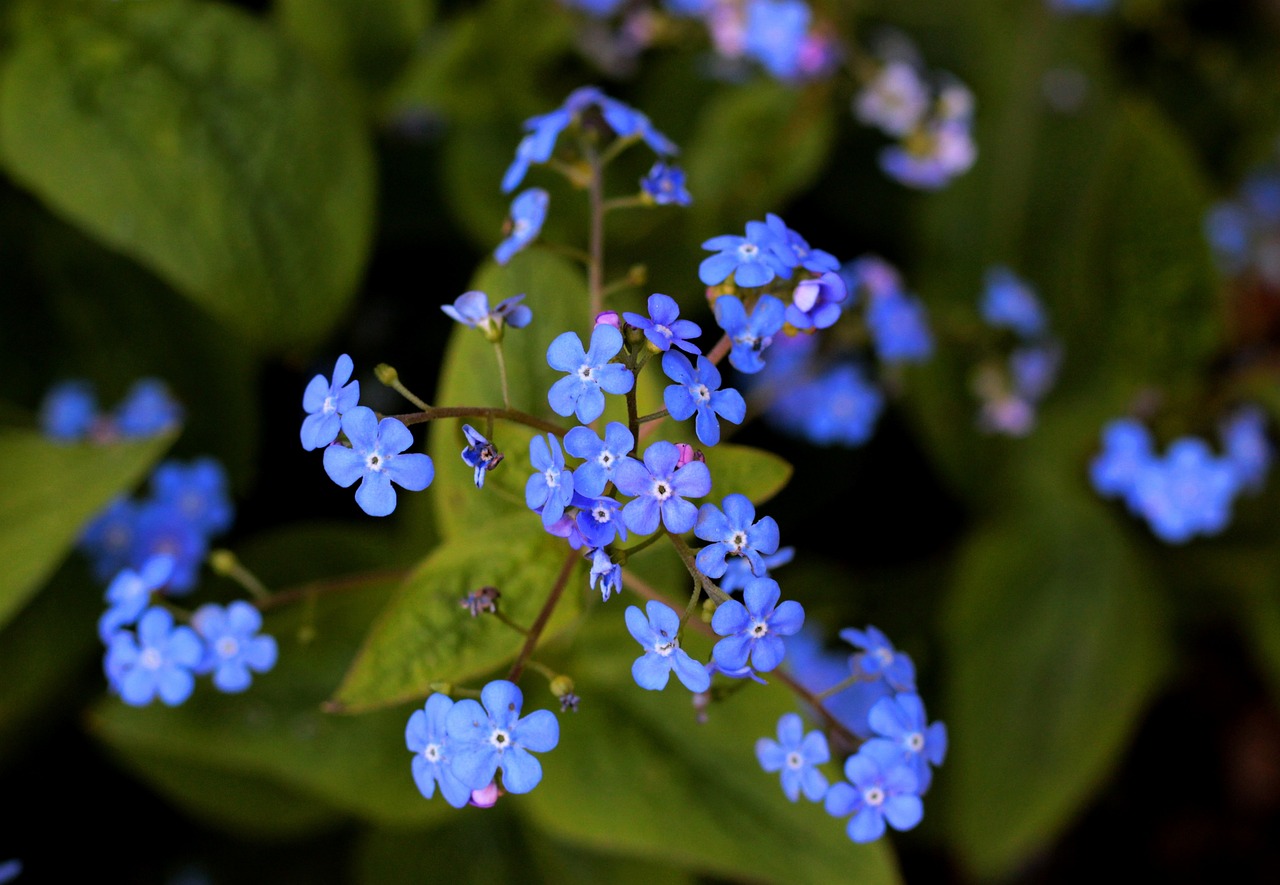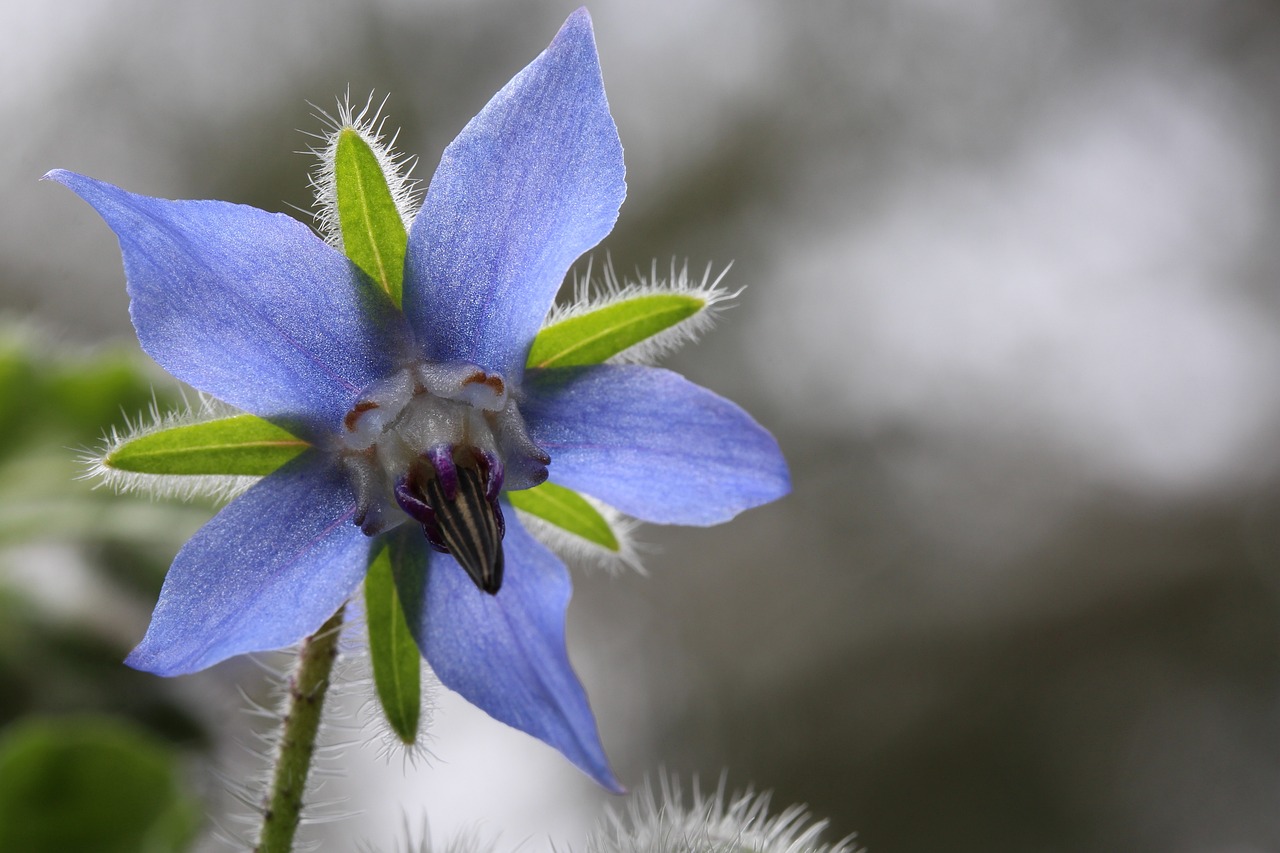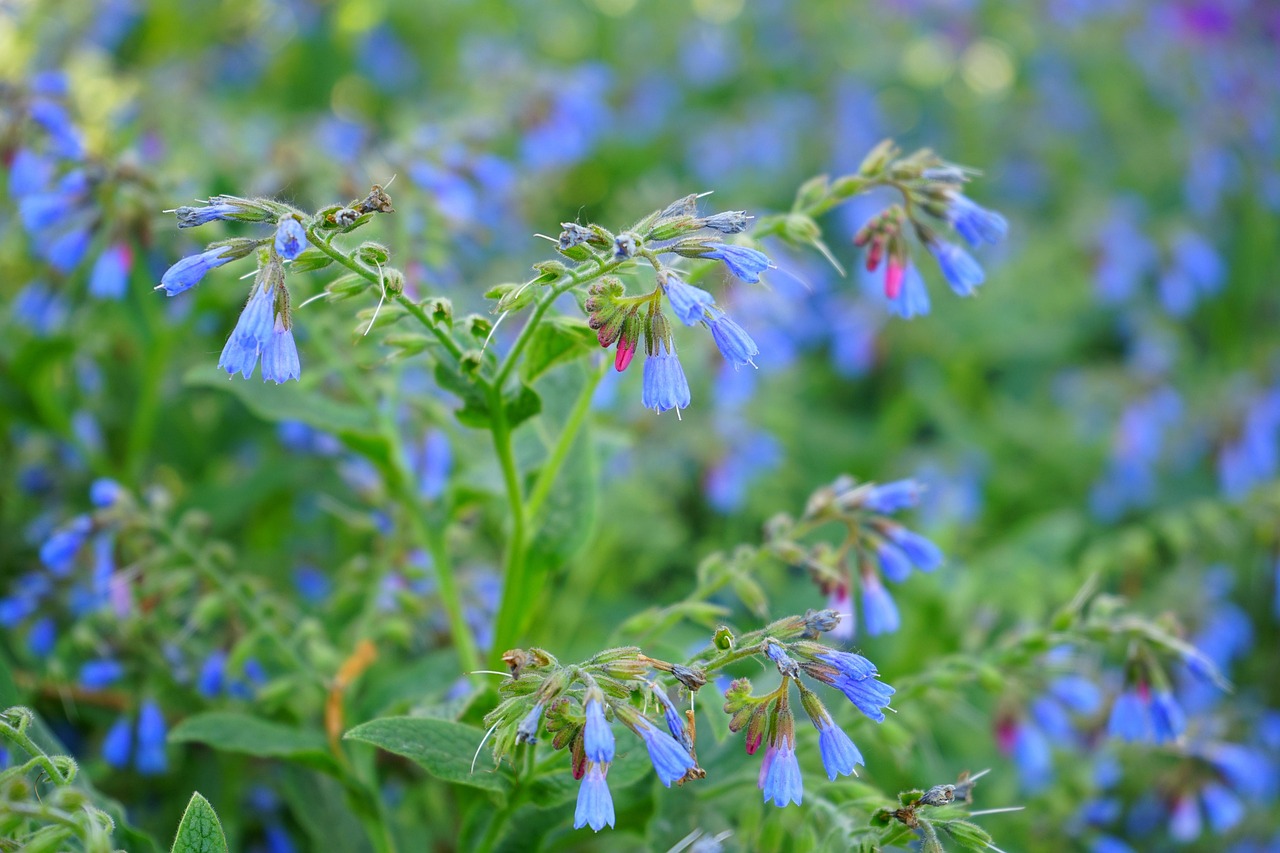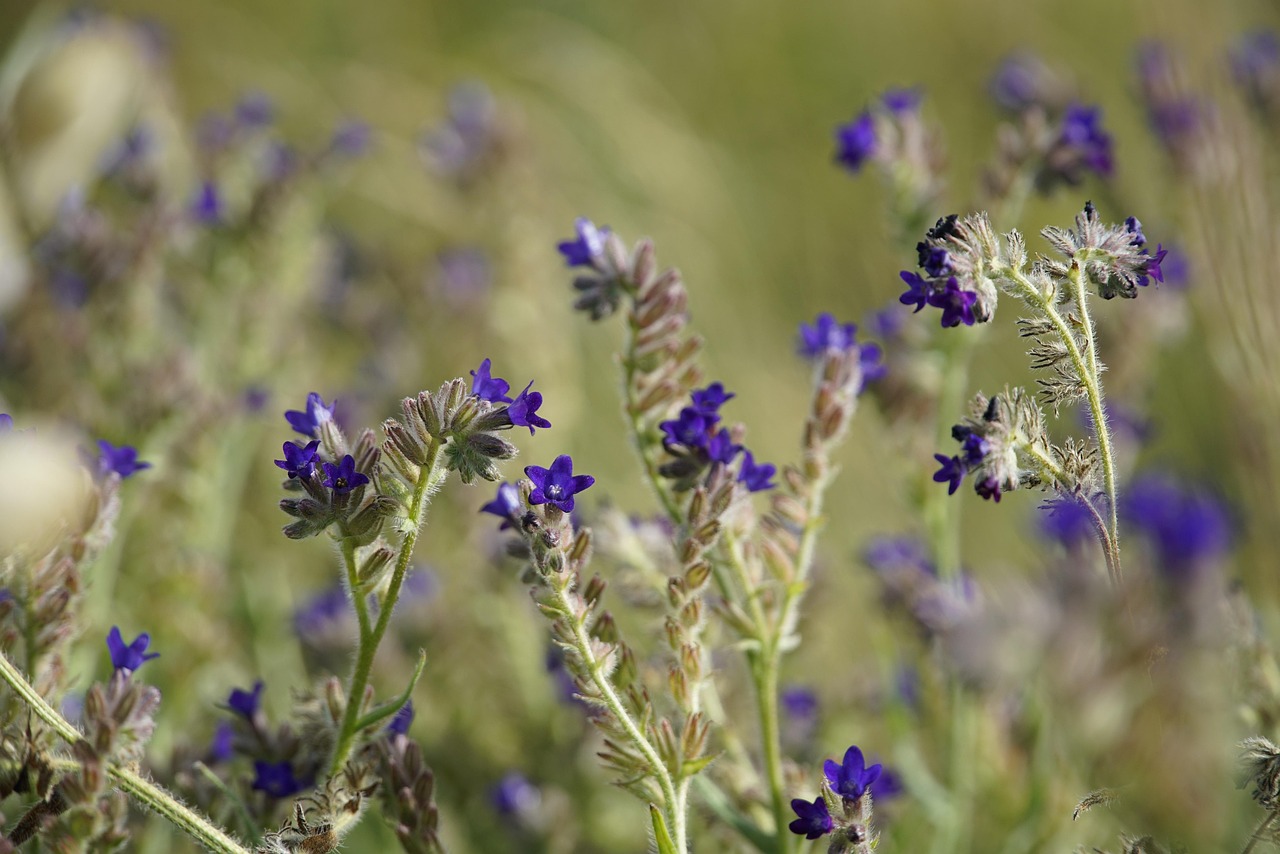Pulmonaria | The Spotted Spring Flower Known as Lungwort
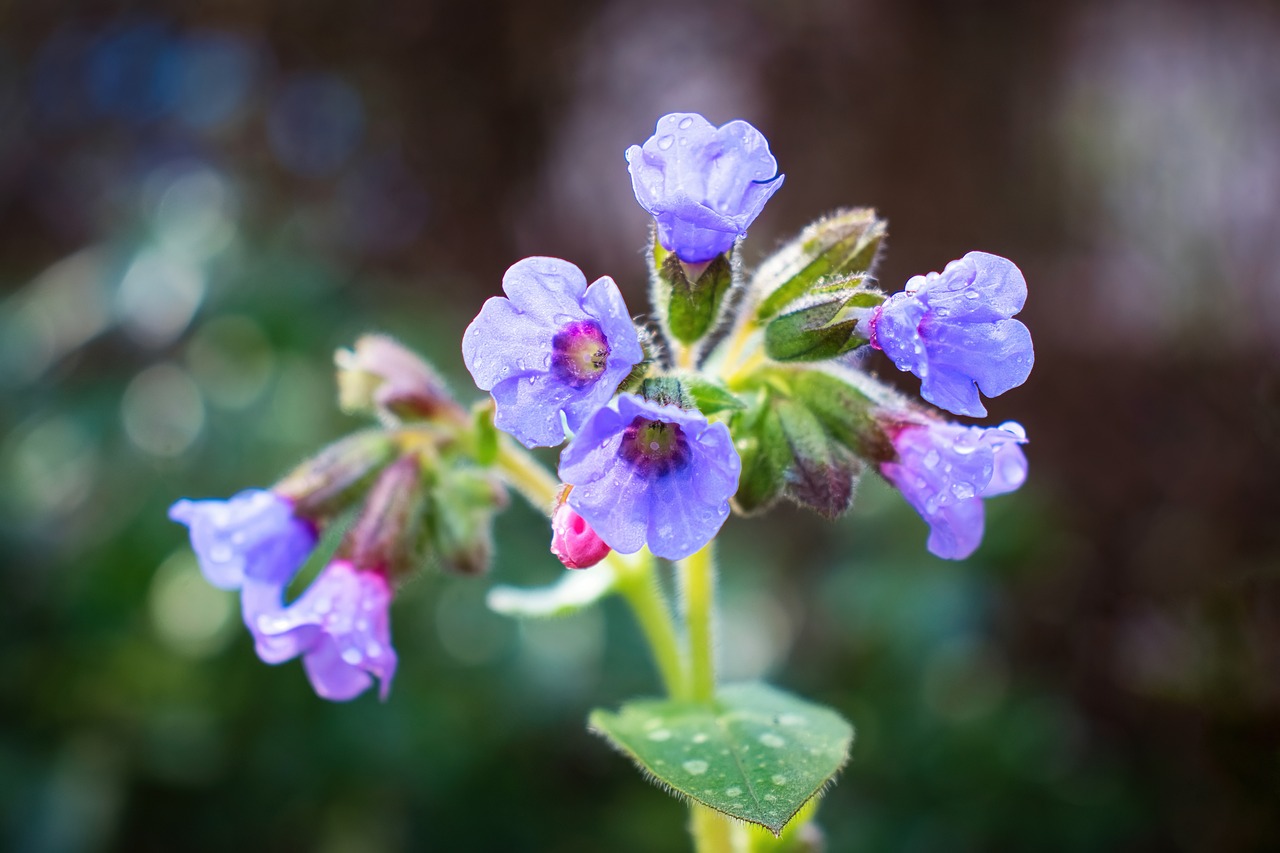
Pulmonaria is a perennial plant characterized by its small bell-shaped flowers that bloom in early spring and its beautifully spotted leaves. Thanks to its charming appearance and hardiness, it is a popular choice for shade gardens and rock gardens.
In this article, I will explain in detail the basic information, cultural and historical background, and growing tips for Pulmonaria.
Basic Information
- Scientific name: Pulmonaria
- Family: Boraginaceae
- Origin: Europe, the Middle East, and parts of Asia
- Appearance: Pulmonaria has broad, spotted leaves and produces purple, pink, or blue flowers in spring. The flowers often change color on the same plant, adding vibrancy to the garden. It grows compactly, reaching about 20–40 cm in height.
- Blooming season: February to April (depending on region and climate)
Cultural Significance Around the World
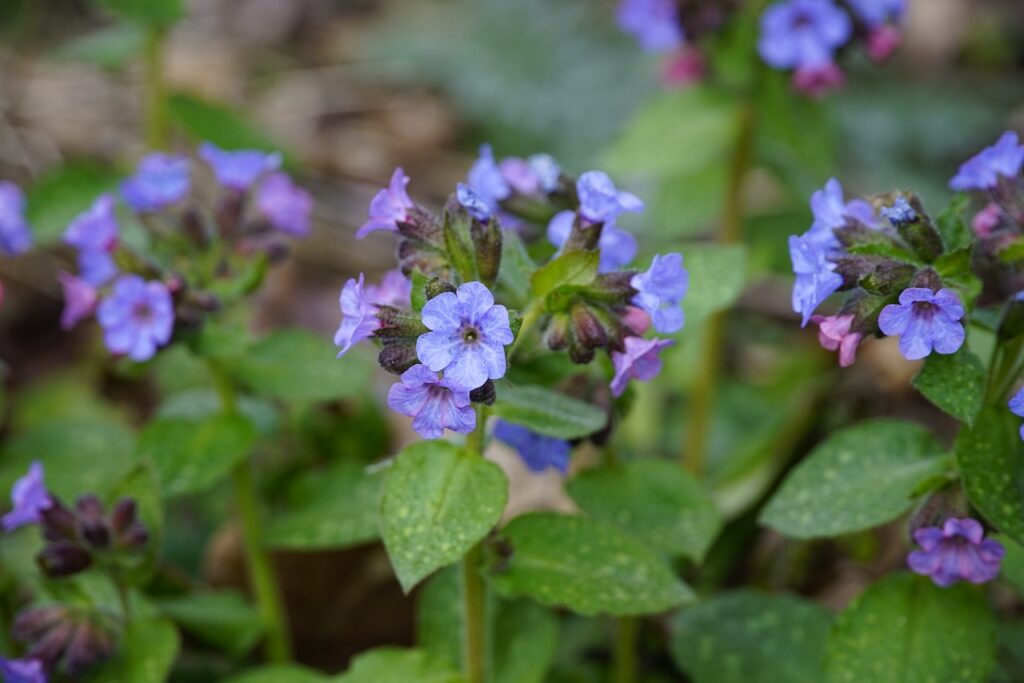
Pulmonaria is widely appreciated in Europe, where its distinctive spotted foliage is valued in garden design.
In the United Kingdom, it has long been cultivated as a garden plant and is a classic in shade gardens, heralding the arrival of spring.
Because the shape and markings of its leaves resemble lungs, it is also called “lungwort.” This name originates from the medieval European “Doctrine of Signatures,” which held that the form of a plant indicated its connection to human organs or functions.
In naturalistic garden styles, Pulmonaria is cherished as part of woodland plantings, and by blooming in early spring, it plays an important role in bringing color to gardens before other plants emerge.
Historical Background
In medieval Europe, Pulmonaria was admired for its beautiful leaves and flowers, and it was widely planted in monastic and aristocratic gardens.
In England, from the 16th century onwards, horticulturists bred many varieties, producing cultivars with diverse colors and forms.
During the Victorian era, its resilience and floral variety made it a staple of gardening culture, spreading widely into both public and private gardens.
Gardening Advice
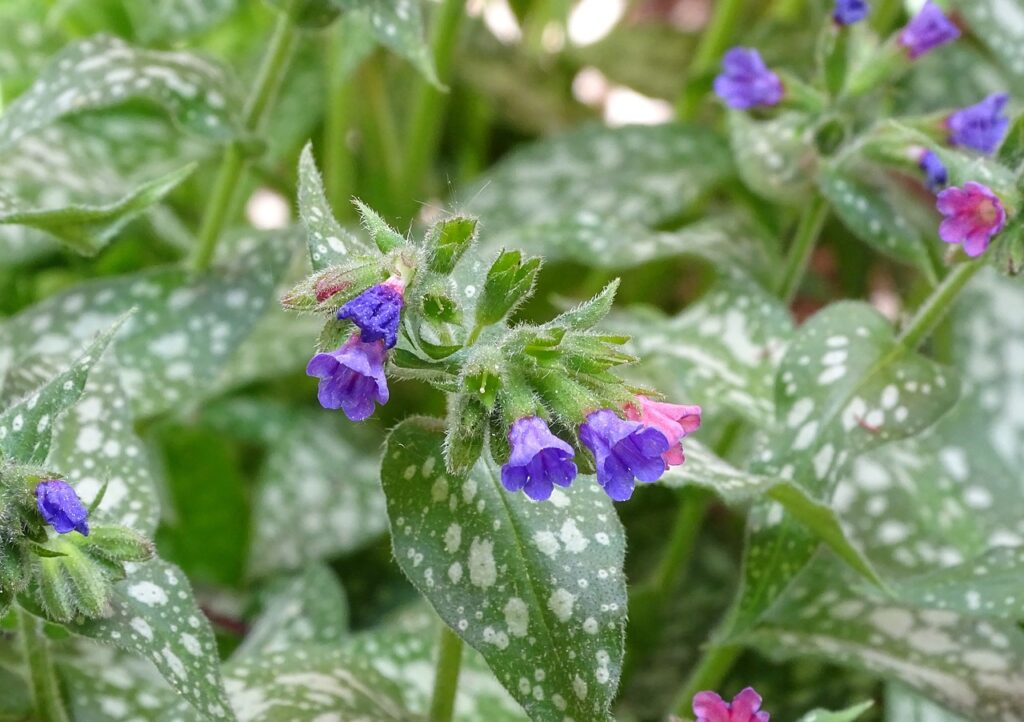
Pulmonaria is hardy and easy to grow, but providing the right environment enhances its beauty. Below are some growing points:
Light
Prefers partial to full shade. Too much direct sunlight can scorch the leaves, so dappled light is ideal.
Watering
Keep the soil evenly moist, especially in summer. Water before the topsoil dries out completely.
Soil
Well-drained, humus-rich soil is best. A mix with leaf mold works well. It grows in both acidic and neutral soil.
Fertilizer
Apply a slow-release fertilizer in spring through early summer. Use sparingly, as excessive fertilizer should be avoided.
Pruning
Remove spent flowers and damaged leaves after blooming to maintain appearance and encourage new growth.
Conclusion
Pulmonaria brightens up the garden in the early spring season and is perfect for shade or rock gardens.
I encourage you to add Pulmonaria to your garden and enjoy the changing seasons with this delightful plant.


